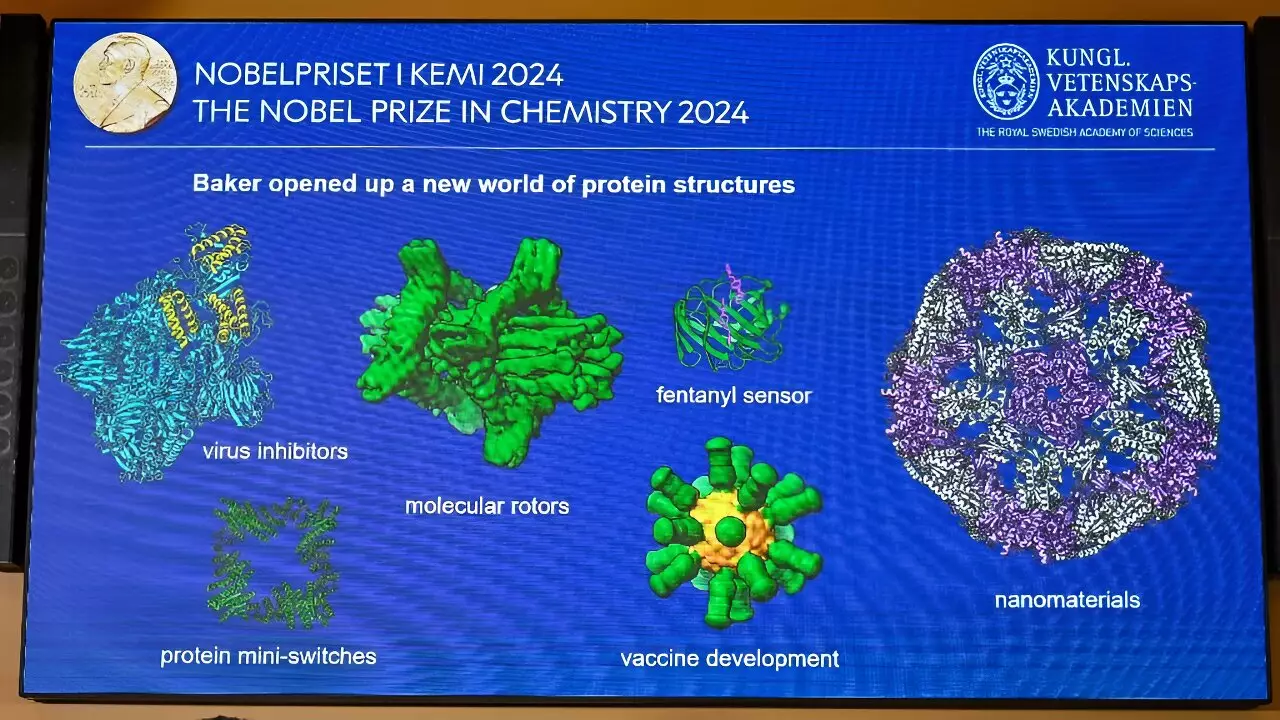On a day that will resonate in the annals of scientific achievement, the Nobel Prize in Chemistry was awarded to a trio of trailblazing scientists: Demis Hassabis and John Jumper from Google’s DeepMind lab, alongside biochemist David Baker. Their collaborative efforts have not only advanced our understanding of proteins, considered the fundamental building blocks of life, but have also harnessed the potential of artificial intelligence (AI) in doing so. The implications of their discoveries span the realms of medicine, environmental science, and beyond, marking a monumental leap in biochemistry.
To appreciate the significance of this work, it’s essential to comprehend the central role proteins play in life. According to Davide Calebiro, a protein researcher, proteins are analogous to “the factories of everything that happens in our body.” Every cell operates according to a detailed plan—a blueprint dictated by DNA. This genetic information orchestrates the complex transformation of cells, steering them toward specific fates whether it be turning into neurons or muscle fibers. Proteins, comprised of 20 different amino acids, are responsible for executing this blueprint’s instructions.
The assembly of amino acids into a protein structure is a dynamic process that culminates in three-dimensional configurations. These shapes dictate a protein’s function and efficacy, underscoring the necessity for chemists to decode how linear sequences correlate with intricate 3D proteins. Mary Carroll, president of the American Chemical Society, elaborates on this phenomenon likening it to a traditional telephone cord, which when stretched, displays a linear format but “springs back” to its original shape as soon as it is released. The complexity of this transformation has bewildered scientists for decades.
Despite years of research, the quest to understand protein structures stumped scientists for decades. The challenges were so daunting that they led to the establishment of competitions like the “Protein Olympics,” an event where the predictive capabilities of researchers to determine protein structures were put to the test, often with lackluster outcomes. Underlying this failure was a century-long effort to establish a coherent framework for predicting how the sequences of amino acids correspond to their final shapes.
However, with the advent of AI, a paradigm shift was on the horizon. Hassabis and Jumper utilized their AI model, AlphaFold, training it on a vast dataset of known sequences and their corresponding structures. This powerful model successfully predicted the structures of nearly 200 million proteins, demonstrating a vital understanding of protein folding that had eluded chemists for so long. AlphaFold2’s stellar performance effectively redefined the landscape of structural biology, sparking enthusiasm and hope among scientists.
While Hassabis and Jumper focused on discerning existing structures, David Baker’s approach was radically different. He aimed to create entirely new proteins that had never been observed in nature. Employing Rosetta, a pioneering computational tool that Baker developed, he navigated through existing protein blueprints to discover short sequences that aligned with the desired shape and function. Baker’s innovative methodology opened new avenues for protein design and engineering, allowing for the customization of proteins for diverse applications.
The implications of mastering protein engineering are immense, not only contributing to our understanding of fundamental life processes but also positioning scientists to invent proteins capable of undertaking specialized tasks. This could lead to breakthroughs in drug development, climate-friendly materials, and even combating antibiotic resistance, presenting a future rich with possibilities.
Baker’s creations are not theoretical; they represent real-world applications that can emerge from this new understanding. He specifically pointed to a protein designed during the COVID-19 pandemic, aimed at providing protection against the virus, suggesting intriguing possibilities like a nasal spray comprised of engineered proteins that could safeguard against future pandemic threats.
Calebiro remarks on the transformative potential of this research, suggesting we may be at the dawn of a new era in science. The advancements made by these three Nobel laureates illuminate a path not just for their respective fields but for humanity’s capacity to tackle pressing challenges through innovative protein research.
As we delve deeper into the complexities of life at the molecular level, this blend of artificial intelligence and protein science heralds an unprecedented time in biochemistry, paving the way for innovations that could redefine medicine and environmental preservation. This groundbreaking research exemplifies how interdisciplinary collaboration can yield solutions that demystify the complexities of life itself and guide us toward a future rich with promise.


Leave a Reply